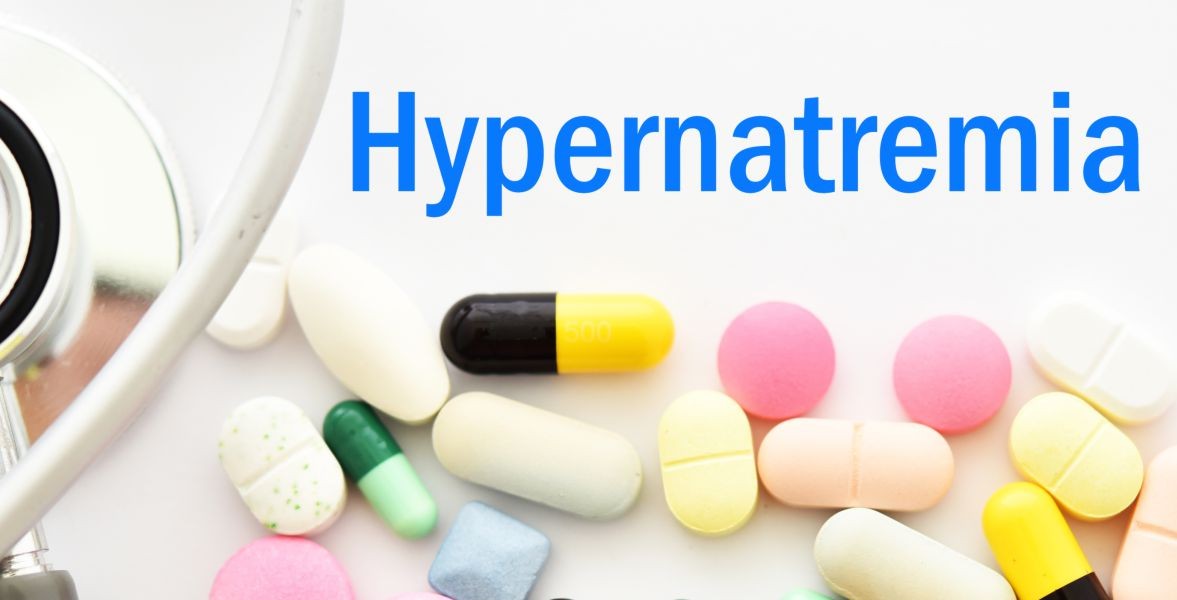Published - Tue, 26 Jul 2022

HYPERNATREMIA
The medical word for having too much sodium in the blood is hypernatremia. An essential ingredient for the body's healthy operation is sodium. The blood contains the majority of the sodium in the body. It is also an essential component of the lymph fluids and cells in the body. A rise in serum sodium concentration to a number above 145 mmol/L, which is considered normal between 136 and 145 milliequivalents per liter, is the definition of a common electrolyte issue.
CAUSES
1. Reduced water intake can be caused by a defective thirst mechanism, unconsciousness, an inability to drink, or a lack of access to water.
2. Increased water loss can be caused by diarrhea, fever, diabetes insipidus, osmotic diuresis, hyperventilation, thyrotoxicosis, sweating, vomiting, and severe burns.
3. Increased sodium intake or renal salt retention is due to hypertonic saline ingestion or infusion, Cushing disease, congenital adrenal hyperplasia, hyperaldosteronism and sodium bicarbonate administration.
CLINICAL FEATURES
Symptoms:
—Lethargy/lack of energy
—Increased thirst
—Confusion
—Muscle irritability/twitches
—Seizures
—Tremulousness
—Weakness
—Coma
Physical examination findings:
—Dry mucous membranes
—Flat neck veins
—Orthostatic hypotension
—Poor skin turgor
—Respiratory paralysis
—Tachycardia
—Tonic spasms
EVALUATION
1. Laboratory studies should include a complete blood count (CBC); serum electrolyte panel; serum glucose, BUN, and creatinine levels; urinalysis, urine sodium level, and osmolality.
2. Electrocardiography: An ECG should be obtained.
THERAPY
1. Fluid replacement: The amount of water needed to correct hypernatremia can be estimated as follows:
Water deficit (L) = 0.6* (usual body weight in kg)* (measured Na+ concentration - desired Na+ concentration) / measured Na+ concentration
—To increase blood pressure and tissue perfusion in cases of severe dehydration, normal saline or lactated Ringer solution should be provided.
—After the perfusion has been restored, 0.45 percent saline is given to keep the urine production at 0.5 mL/kg/hour.
2. Sodium reduction: The rate of sodium reduction should not exceed 10 to 15 mEq/L/day. The goal is to reach a normal serum sodium value in 48 to 72 hours.
DISPOSITION
Admission: Symptomatic patients, with serum sodium concentration greater than 160 mEq/L (with or without symptoms), patients who require intravenous or pharmacologic correction of the sodium imbalance, and patients who have significant comorbid factors require admission.
Discharge: Before discharging a patient, the case should be discussed with a primary care physician and arrangements should be made for appropriate follow-up.
Created by
Comments (0)
Search
Popular categories
Latest blogs

All you need to know about Syphilis
Tue, 15 Nov 2022

What is Pemphigus Vulgaris?
Tue, 15 Nov 2022

Know about Scorpion Stings
Sat, 12 Nov 2022

Write a public review